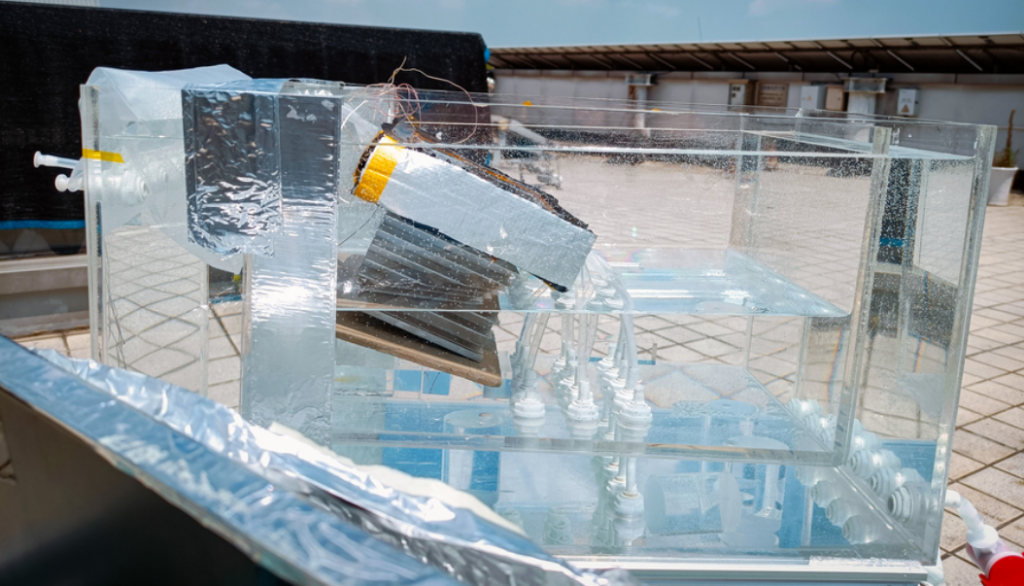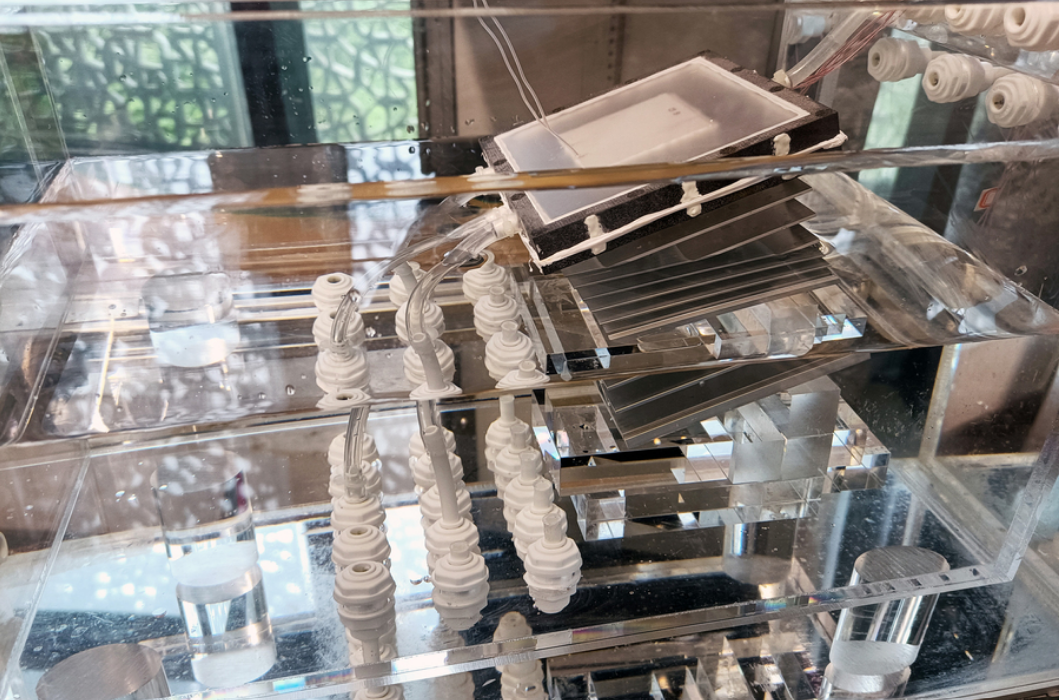1. Introduction
Engineers at the Massachusetts Institute of Technology (MIT) and the Chinese University of Shanghai Jiao Tong are joining forces to develop a state-of-the-art desalination system powered by solar energy that can produce fresh water at a cost that is more economical than tap water. This pioneering device employs natural thermohaline condensation, emulating currents in the sea to efficiently mesh salt from water through the application of solar energy.
The configuration of the device
The system entails several phases of evaporators and condensers, designed to boost water and salt flow. This configuration averts salt build-up, considered for the desalination system as a great problem, permitting the device to function efficiently for prolonged periods without maintenance. After scaling up to the dimensions of a small suitcase, this system can generate 4 to 6 litres of drinking water per hour ( (Chu, Jennifer, 2023).
The system is premeditated to be completely passive, as it does not necessitate electricity, resulting in huge operation costs redaction. It is more likely to be extremely efficient even with variable salinity levels of water, as well as natural seawater and highly salty water ( MIT Portal, MIT News).

An intense convection
The team's new method improves on their prior design, which featured many tiers known as stages. Each stage included an evaporator and a condenser that passively separated salt from entering water using solar heat. That device, which the team tested on the roof of an MIT building, efficiently turned solar energy into evaporated water, which was then condensed into potable water. However, the remaining salt quickly gathered as crystals, clogging the system within a few days. In a real-world scenario, a user would have to place stages on a regular basis, considerably increasing the system's overall cost.
The engineers think it has ultimately emerged a design that may generate an enormous quantity of water at an accelerated pace while simultaneously eliminating a substantial proportion of salt, enabling the system to generate safe drinking water continuously. The heart of their innovative design resides in the fusion of their two preceding ideas: a multi-tiered arrangement of evaporators and condensers, which is also structured to enhance the flow of water and salt within every leve
The minor circulations produced by the team's innovative technology are comparable to the ocean's "thermohaline" convection, which is a phenomenon that propels water movement worldwide based on variations in salinity and sea temperature. Thermohaline Thermo means Temperature and Haline is Salinity
The centrepiece of the team's new design is a singular stage that takes the form of a small box, covered with a black material that effectively retains the sun's heat. The internal structure of the box is separated into two separate parts: its top part and its bottom section. The higher part of the structure enables water to pass through. This area is equipped with an evaporator layer that utilises solar energy to heat up and evaporate any water that comes into direct contact with it. The water vapour is subsequently sent to the lower section of the container, where a condensation layer cools the vapour using air, resulting in the formation of a salt-free, potable liquid. The researchers placed the entire box at an incline within a bigger, empty container. They then connected a tube from the upper part of the box to the bottom of the container and floated the container in seawater. In this arrangement, water can spontaneously ascend via the tube and enter the box, where the inclination of the box, along with the thermal energy from the sun, causes the water to rotate as it passes through. The presence of minor eddies facilitates the contact between water and the upper evaporating layer, while also preventing the salt from settling and causing blockages by maintaining its circulation.
The team constructed multiple prototypes, each featuring a various amount of phases (one, three, and 10), and analysed their effectiveness in water with wide salinity levels, including both normal seawater and water that was seven times more saline. Based on the conducted experiments, the scientists determined that if each phase were expanded to cover an area of one square metre, it would provide a maximum of 5 litres of potable water per hour. Furthermore, the system has the capability to remove salt from water without any salt build-up for multiple years. Considering the prolonged lifespan and the complete lack of electricity required to operate the system, the team predicts that the total expenses for maintaining the system would be considerably less than the cost of producing tap water in the United States.
Bibliography
Chu, Jennifer. (2023, September 2023). MIT. Retrieved from MIT News: /news.mit.edu/2023/desalination-system-could-produce-freshwater-cheaper-0927
